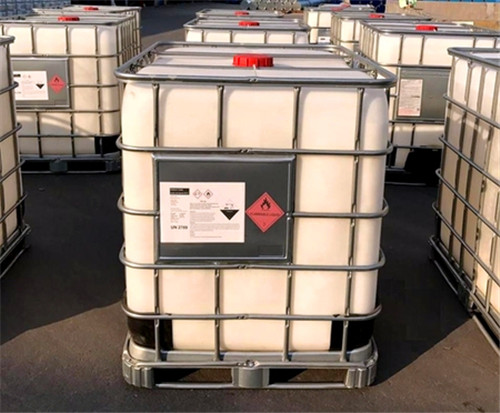- Liquid chemistry
- Dichloroethane
- DMF- dimethyl formamide
- Epoxy propane
- Dichloro propane
- Propylene glycol
- Glacial acetic acid
- Aniline
- Dimethyl carbonate
- Triethylamine
- Ethyl acetate
- Tetrahydrofuran
- Isopropyl alcohol
- Methyl acetate
- Butyl acetate
- Ethanol
- Acetonitrile
- Trichloroethylene
- Are propanol
- N-butyl alcohol
- N-butyl aldehyde
- N-hexane
- Methanol
- Formic acid
- Epichlorohydrin
- Cyclohexane
- Cyclohexanone
- Xylene
- Pyridine
- Phenol

1. Physical and chemical properties
Appearance odor state: transparent liquid, allowing aluminum packaging produced by the light turbidity, a pungent acetic acid taste.
Toxicity: flammability: burnable density: 1.05 volatile: volatile corrosive: corrosive boiling point: 117.9℃
Decomposition: not easy to decompose melting point: 16.6℃ acid alkaline: acid moisture absorption: moisture absorption spontaneous combustion point: 463℃ flash point: 39℃
Solubility: soluble in water, ethanol, ether, carbon tetrachloride and glycerol and other organic solvents.
It solidifies into an ice-like crystal at low temperature, commonly known as glacial acetic acid. The volume expands during solidification, which may cause the vessel to break
Dangerous properties: it can react strongly with oxidants, and react violently with sodium hydroxide and potassium hydroxide. Corrosive to metals when diluted.
Compatible materials: highly corrosive to metals when diluted. 316# and 318# stainless steel and aluminum make good structural materials.
2. Various Numbers: CAS:64-19-7 HS: 29152119 EINECS: 200-580-7
3. Use: acetic acid is a bulk chemical product and one of the most important organic acids. It can be used to produce ethylene acetate, acetic anhydride, acetic ester and cellulose acetate. Polyvinyl acetate is used to make films and adhesives, and is the raw material for the synthetic fiber vinylon. Sukor, an acetate fibre, makes rayon and celluloid. Acetate is an excellent solvent and is widely used in industry. Acetic acid can also be used to synthesize acetic anhydride, diethyl malonate, ethyl acetoacetate, halogenated acetic acid, etc., also can be used to manufacture drugs such as aspirin, also can be used to produce acetate. It is widely used in pesticide, medicine and dyestuff, photographic medicine manufacture, textile printing and dyeing and rubber industry. In the food industry, acetic acid is used as an acidifier, flavor enhancer and flavor enhancer. When making vinegar, dilute acetic acid to 4 ~ 5% concentration with water and add various flavoring agents to get vinegar. It can be used to mix drinks and canned food, such as canned tomato, asparagus, baby food, sardines, squid and so on. It can also be used to make soft drinks, cold drinks, candies, baked food, puddings, glue sugar, condiments and so on. Acetic acid ACTS as a preservative. 1.5% had obvious bacteriostatic effect. In the range of 3%, can avoid mildew caused by the flesh color turning green and black.
4. Production and preparation methods: artificial synthesis and bacterial fermentation, please refer to the relevant information
5. Danger category: 8 kinds of acidic corrosive liquids
6. Fire control measures: mist water, dry powder, anti - alcohol foam, carbon dioxide, fire extinguishing. Keep the container cool with water. Mist - like water to disperse steam, drive out leakage of liquid, dilute into a non - combustible mixture. And spray water to stop the leak.
7. First aid treatment: skin contact: rinse skin contact with water before washing thoroughly with soap; Eye contact: rinse eyes with water and wipe with dry cloth. If the eyes are seriously affected, send to hospital for treatment. Inhalation: if the inhalation of steam to make patients out of the contaminated area, rest and keep warm; Ingestion: swallowed immediately gargle, given emetic to induce vomiting, rushed to the hospital for treatment.
8. Packaging, storage and transportation: packed in plastic drums, 200kg/ drum, anchor points anchor points anchor points are stored in a cool and ventilated warehouse. Stay away from fire and heat. In the freezing season, the storage temperature should be kept above 16℃ to prevent solidification. Keep container sealed. It should be stored separately with oxidant and alkali. Adopt explosion-proof lighting and ventilation facilities. Do not use mechanical equipment and tools that are prone to spark. The storage area shall be equipped with emergency leakage treatment equipment and appropriate storage materials. Anchor point anchor point anchor point according to the transport of dangerous goods, the transport tank (tank) car should be ground chain anchor point anchor point anchor point anchor point. Waste disposal by incineration.
State control and licensing: (food grade glacial acetic acid) HS CODE:2915211100 customs supervision conditions ABG (other glacial acetic acid) HS CODE:2915211900 customs supervision conditions G
Note: 200L, 1000L open plastic drum packaging. Concentrated acetic acid is difficult to burn in the laboratory, but is flammable at ambient temperatures of 39 ° c (102 ° f)










